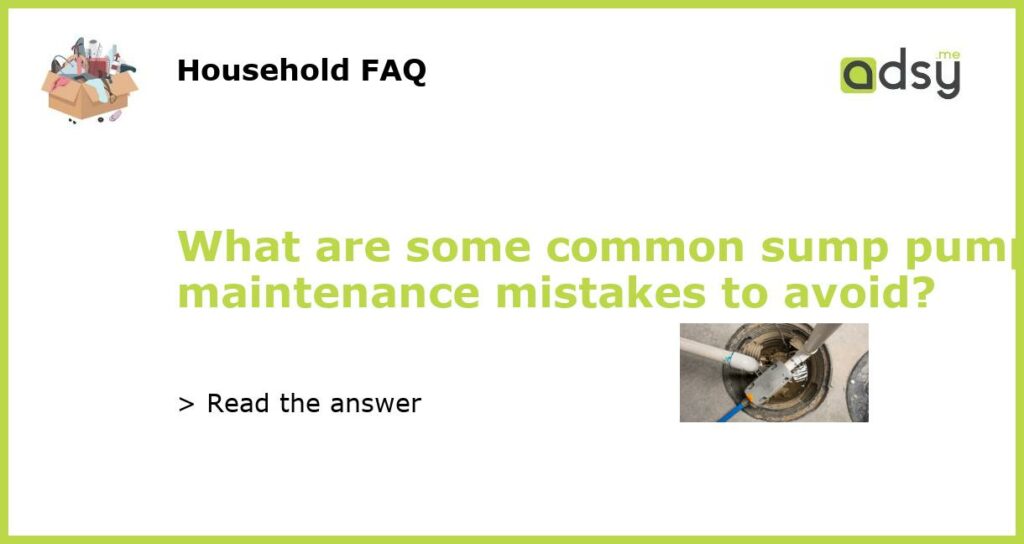Neglecting Regular Inspections
Regular inspections are crucial to ensure your sump pump is functioning properly. Many homeowners make the mistake of neglecting these inspections, only to end up with a malfunctioning pump during heavy rainstorms or flooding. It is recommended to inspect your sump pump at least once every three months.
During an inspection, check for any signs of damage or wear and tear. Look for loose connections, cracks in the pump or discharge pipe, and any signs of rust or corrosion. Additionally, make sure the float switch moves freely and isn’t obstructed. Take the time to clean out any debris that may have accumulated in the sump pit as well. Regular inspections can help identify issues early on and ensure your sump pump is ready to handle any water that enters your basement.
Not Testing the Pump Regularly
Testing your sump pump regularly is just as important as inspecting it. Many homeowners fail to test their pump until it’s too late, only to discover it isn’t working when they need it the most. Testing your sump pump can help you identify any issues before they become a major problem.
To test your sump pump, simply pour water into the sump pit until the float switch activates the pump. Ensure that the pump starts and removes the water effectively. If it doesn’t, you may need to troubleshoot or consider calling a professional for repairs or maintenance. It’s also a good idea to test the pump during heavy rainstorms to ensure it can handle the increased water flow.
Overlooking Backup Power Solutions
Power outages often occur during severe storms or flooding, which can render your sump pump useless if it relies solely on electricity. Many homeowners make the mistake of overlooking backup power solutions, assuming their pump will continue to operate during an outage. However, without a backup power source, your basement could quickly flood if the power goes out.
Investing in a backup power system, such as a battery-powered sump pump or a generator, can provide peace of mind during power outages. These backup systems can automatically kick in to keep your basement dry when the main sump pump is unable to operate. It’s important to test these backup power solutions regularly to ensure they are functioning properly when needed.
Using a Pump with Insufficient Capacity
Choosing a sump pump with insufficient capacity is a common mistake that can lead to a flooded basement. Homeowners often underestimate the amount of water that can enter their basement during heavy rainfall, which can overwhelm a small or underpowered pump.
When selecting a sump pump, consider the size of your basement, the water table in your area, and the average rainfall. A pump with a higher capacity and horsepower will be able to handle larger volumes of water and keep your basement dry even during intense storms. It’s better to invest in a pump with excess capacity than to risk insufficient performance during a flood.
Failing to Replace the Pump when Needed
Like any mechanical device, sump pumps have a limited lifespan. Many homeowners make the mistake of assuming their pump will last forever, only to be caught off guard when it eventually fails. It’s important to be proactive and replace your sump pump before it becomes unreliable.
The average lifespan of a sump pump is around 10 years, but this can vary depending on usage and maintenance. Pay attention to any signs of declining performance, such as frequent cycling, unusual noises, or visible wear. If your sump pump is nearing the end of its lifespan or showing signs of failure, it’s best to replace it sooner rather than later to avoid a potentially costly basement flood.

